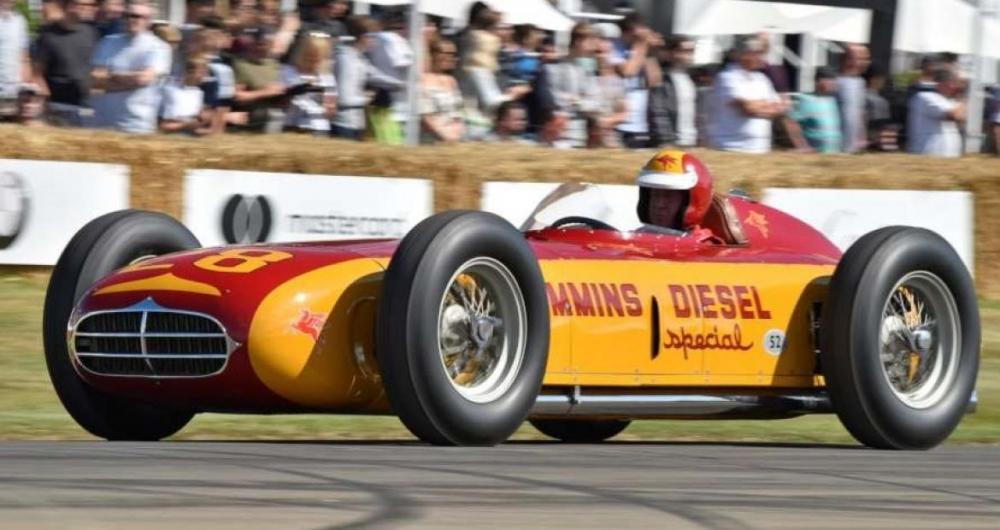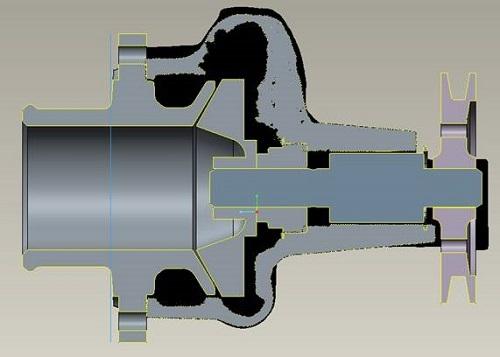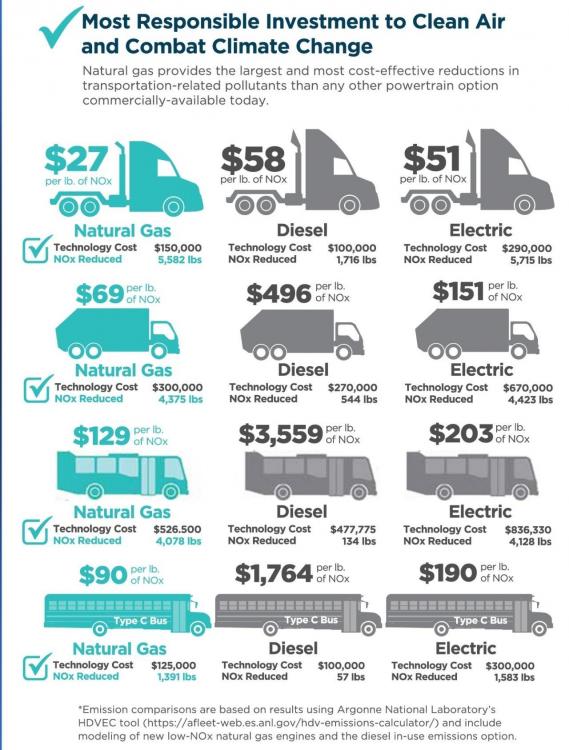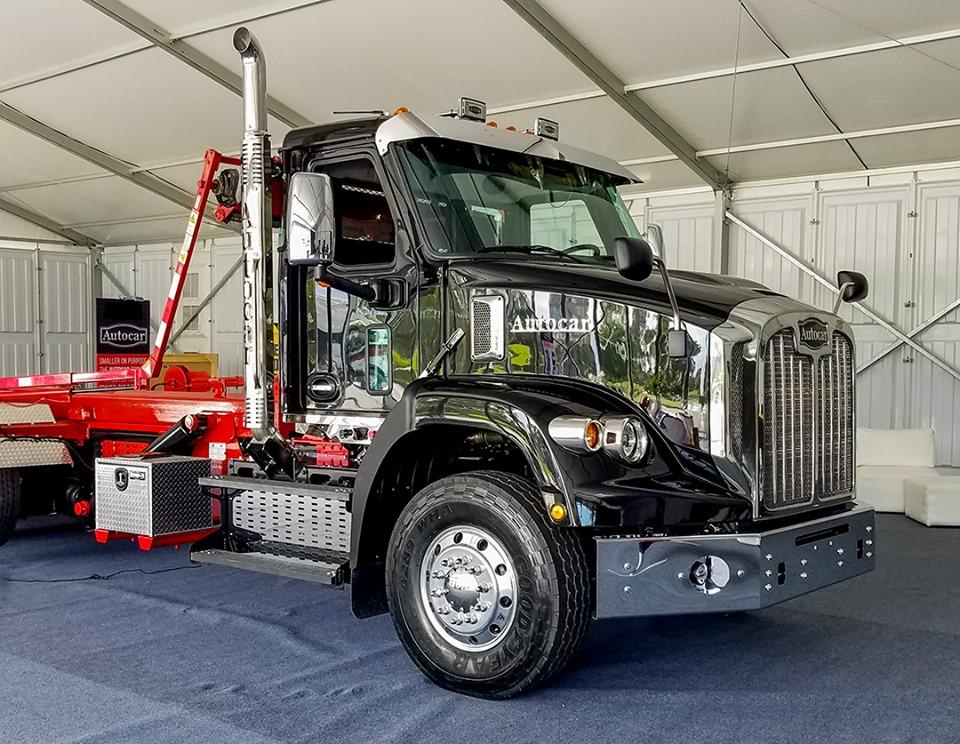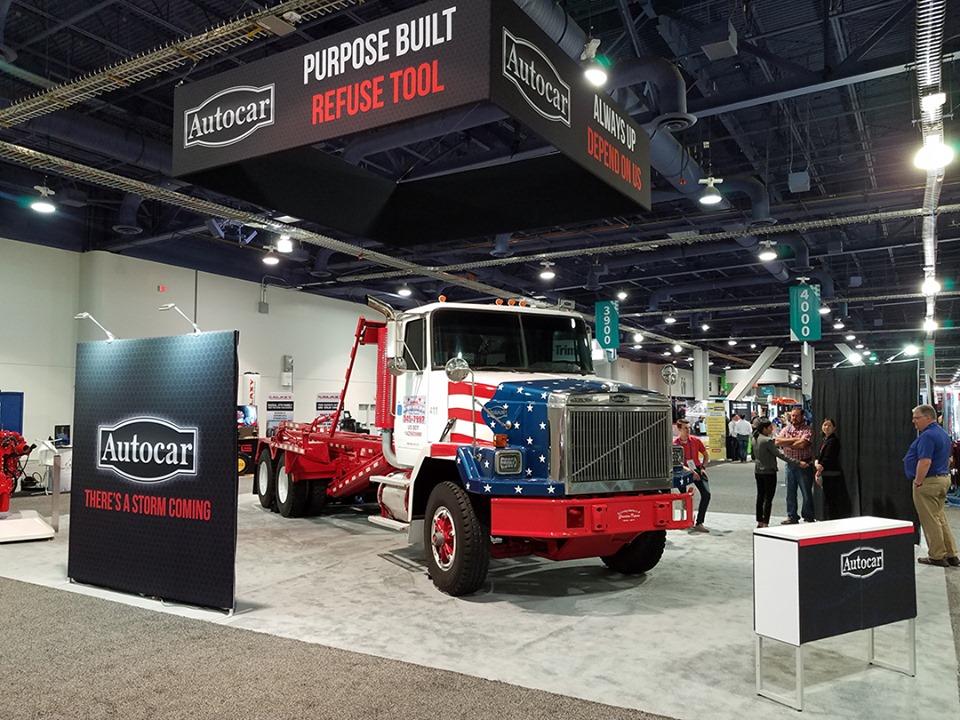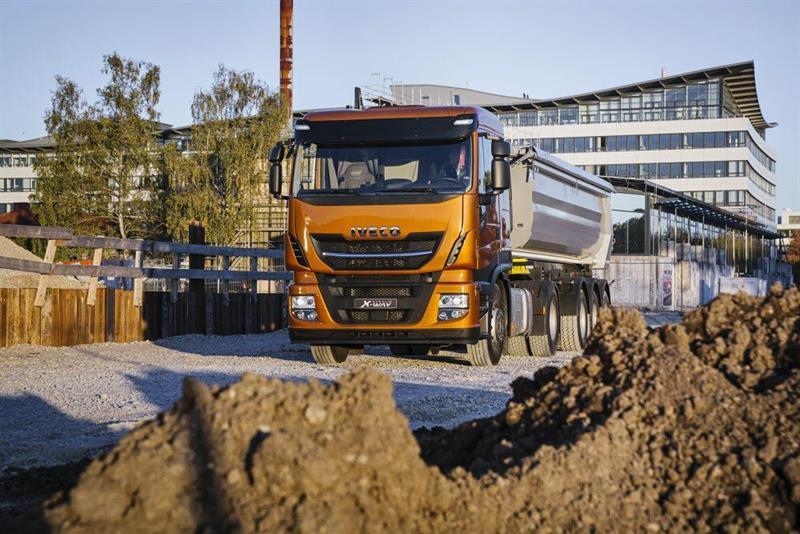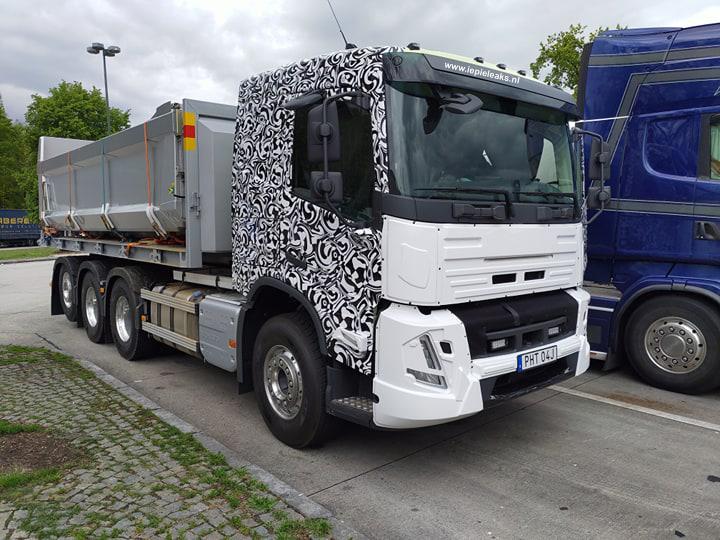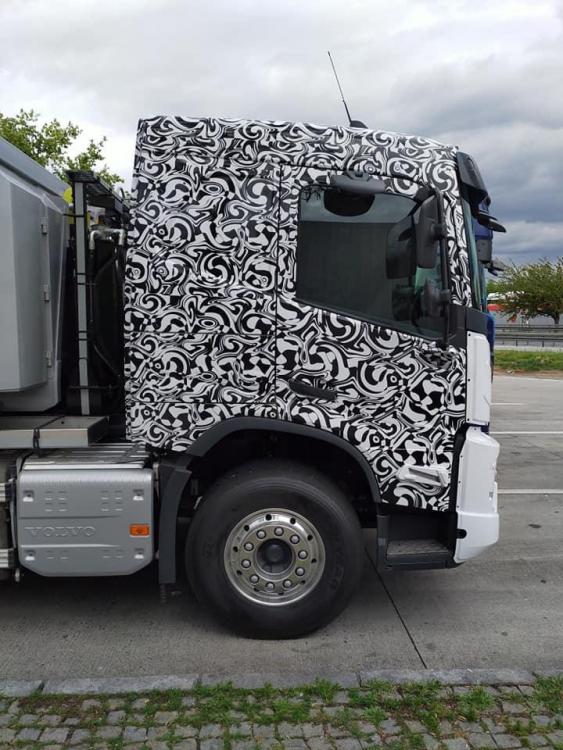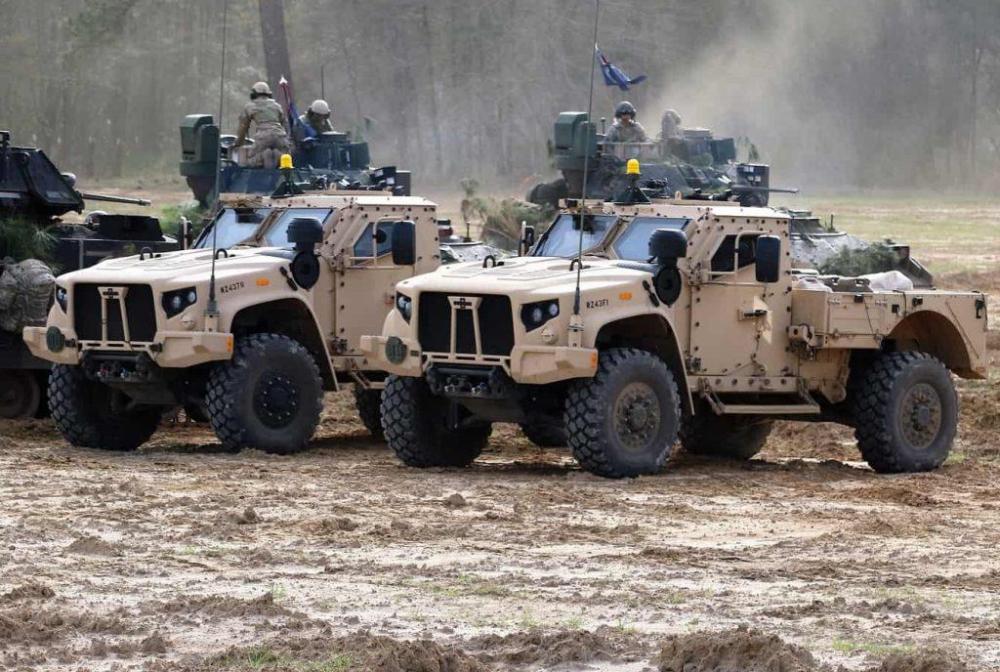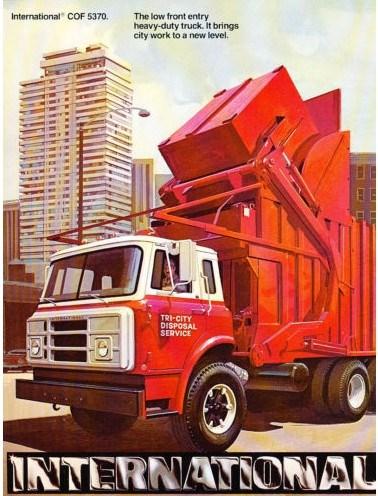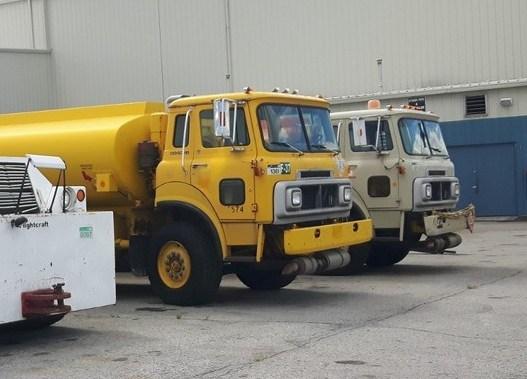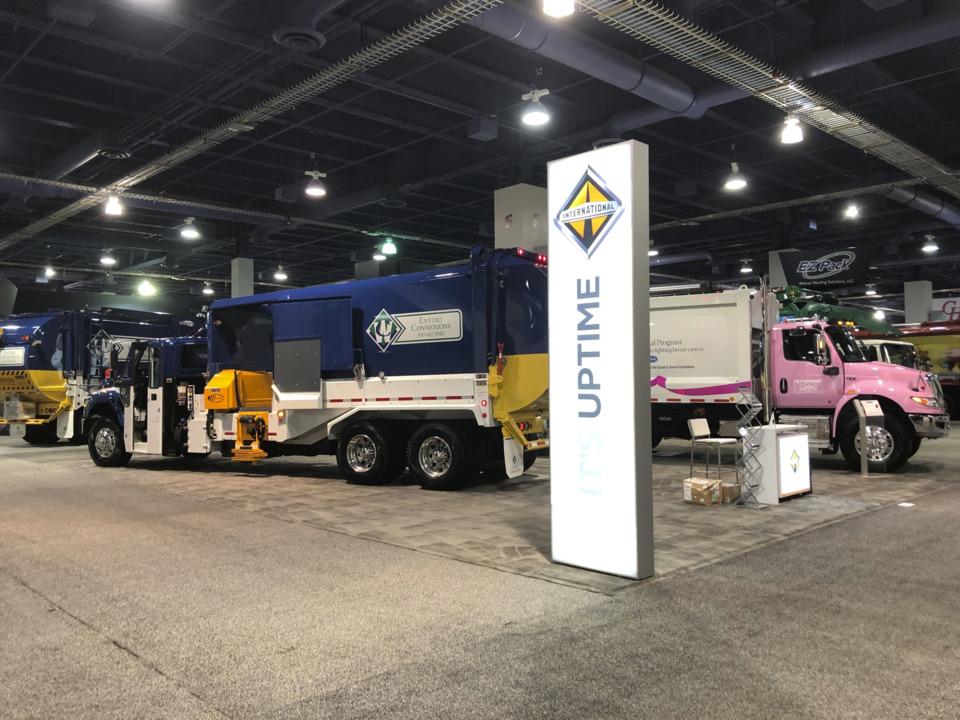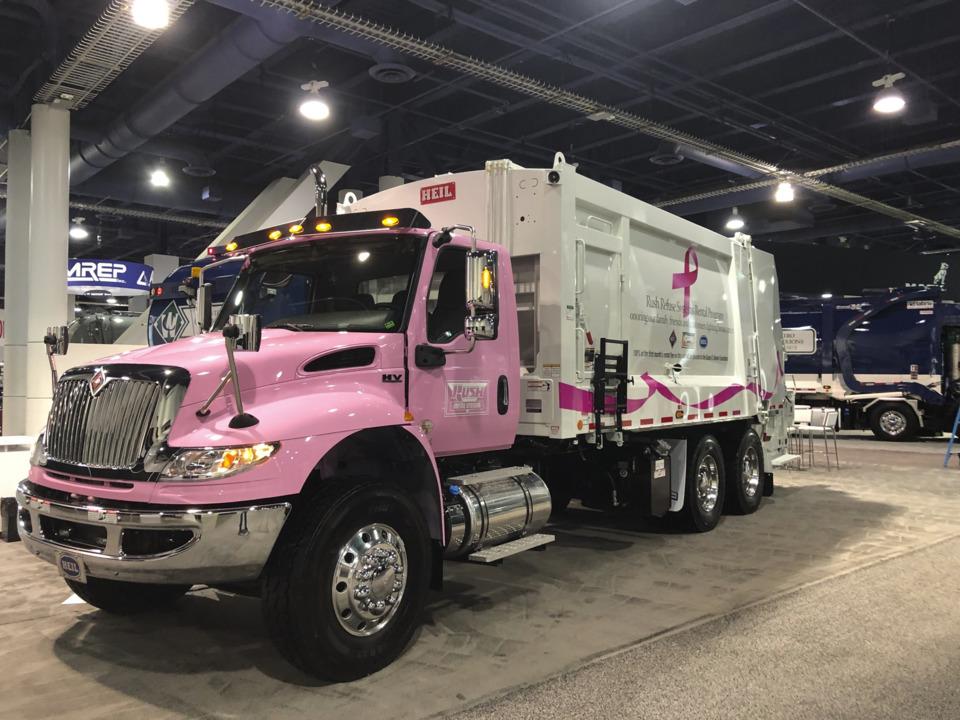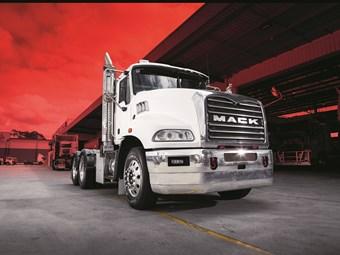
kscarbel2
Moderator-
Posts
18,868 -
Joined
-
Days Won
114
Content Type
Profiles
Forums
Gallery
Events
Blogs
BMT Wiki
Collections
Store
Everything posted by kscarbel2
-
Peterbilt Motors Press Release / May 13, 2019 Vocational Marketing Manager, Tony Sablar, walks us through the trucks on display in the 2019 Peterbilt WasteExpo booth. .
-
Blair Claflin, Cummins / May 9, 2019 The No. 28 Cummins Diesel Special was the technology wonder of its day. More than six decades later, high technology is helping get the record-setting race car back on the track that made it famous. Cummins engineers, using 3D printing and computerized tomography scanning, created a new water pump for the car, which will return to the Indianapolis Motor Speedway later this month after setting a one-lap track record of 139 miles per hour in qualifying for the pole position in the 1952 race. “Without 3D printing, we would not have gotten this project done in the time frame that we had to do it,” said John Rupp, Advanced Manufacturing Technical Advisor at the Cummins Technical Center in Columbus, Indiana (U.S.). BUILDING A FASTER RACE CAR To commemorate Cummins’ 100th anniversary, the 2019 Indianapolis 500 will include a parade lap featuring the five company-engineered cars that participated in previous races, the first in 1931 and the last, the No. 28 car, in 1952. Cummins’ founder Clessie Cummins occasionally used the 500 to demonstrate and promote the virtues of his company’s engines. By 1952, he had left company, but the goal was essentially the same. Taking advantage of rules allowing for larger diesel engines, a crew of Cummins’ engineers and technicians used a modified truck engine in the No. 28 car, with the first turbocharger ever used at the track. Some parts were milled from aluminum or magnesium to reduce weight. The team used a wind-tunnel to design a more aerodynamic car body. An air of secrecy surrounded the effort in the days before the 1952 race and many interpreted that silence to mean the car was a flop. Imagine the surprise when the Cummins Diesel Special captured the pole with a four-lap average of 138 miles per hour, and set the single lap record. It would complete 70 laps (175 miles) in the race that year before retiring with a clogged turbocharger caused by rubber debris on the track. MAKING OLD NEW AGAIN Over the years, some parts on the No. 28 car didn’t age particularly well, according to Greg Haines, an Off-Highway Design & Development Leader at the company and a member of the Cummins History & Restoration Team. The team worked to get the Cummins cars running again for the anniversary. The water pump, one of the custom parts made of magnesium to reduce weight, was especially concerning. Haines said it was pitted all the way through in one place and very thin in others. To make matters more challenging, no plans for the pump could be found to make a replacement. It was around this time that the Cummins Diesel Special was invited to participate in the 2017 Goodwood Festival of Speed, which describes itself as “motorsport's ultimate summer garden party.” The hill-climb in West Sussex, England, features modern and historic racing vehicles, and draws big crowds of devoted fans. The Cummins Diesel Special participated in the event in the late 1990s but sat for many years after. It would never make it without a new pump. Suddenly the clock was ticking again for No. 28. There wasn’t time to make a new part using traditional sand casting methods, so the Cummins team turned to 3D printing. The company had been studying the technology for use in manufacturing for several years, Rupp said, but it had not yet purchased any printers capable of creating metal objects one ultra-thin layer at a time. Building a new pump was a great chance to tackle a problem facing the company when it comes to aftermarket parts for older engine models. “A real problem we face in the aftermarket space is finding a supplier willing to manufacture a 40-year-old design that was once a high-volume part to fill an order for two or three parts economically,” said Brett Boas, Director of Advanced Manufacturing at the Cummins Technical Center in Columbus. “The tooling to make the casting just no longer exists. Additive technology solves this problem.” Cummins worked with 3rd Dimension Industrial 3D, an additive manufacturing company in Indianapolis. The old pump was scanned to “reverse engineer” its unique features and create a digital file for the 3D printer to use. In less than a week, the new part was printed and ready to go and No. 28 was off to Goodwood. A RARE FIND IN THE BASEMENT The History & Restoration Team is using the same techniques to restore a rare Model F diesel engine found in the basement of the Cummins’ Corporate Office Building, partially disassembled and missing parts. Considerably older than the Cummins Diesel Special, the Model F engine was produced from 1924 to 1931 to power lighthouses, industrial shovels and other uses. Cummins engineers are reverse engineering any missing parts and using 3D printing. They hope to have the engine running by the company’s anniversary celebration in June. “The 3D scanning, reverse engineering, and advanced manufacturing technology that are available today are helping to make these projects possible,” Haines said. “This is an excellent example of using modern technology to restore our historic artifacts.” .
-
NVGAmerica / May 8, 2019 (The 200-member national trade association for the U.S. natural gas vehicle industry.) https://www.ngvamerica.org/ .
-
- 1
-

-
-
"The new Autocar DC cab: 1) It's 100% new, 100% Autocar. 2) It's made in America from galvanized steel and a touch of aluminum for strength+weight optimization, tested for severe-duty beatings. 3) Inspired by the classic Autocar Driver Cab with wraparound glass and tons of operator space. 4) The dash has a steel structure and aluminum panels with exposed fasteners for serviceability. 5) Inside, more authentic custom metals, less plastics. 6) 100% #BadtotheBone #AutocarDC #AlwaysUp" .
-
"Now that we revealed the new #Autocar #DC-64R purpose-built conventional refuse truck, the wraps are off the truck we had hidden as a teaser in our WasteExpo booth. It's the 1990 Autocar ACL64B rolloff graciously loaned by All American Waste in New Mexico. Thanks to Carmine Capone and his family for sharing our celebrations of the new #AutocarDC. #AlwaysUp" .
-
Volkswagen gives ok to taking its truck unit public Jason Cannon, Commercial Carrier Journal (CCJ) / May 13, 2019 Volkswagen AG said on Monday it plans a summertime initial public offering (IPO) of its Traton truck unit. The German automaker just two months ago scuttled IPO plans for Traton – formerly Volkswagen Truck & Bus and the umbrella company for MAN, Scania, Volkswagen Caminhões e Ônibus and RIO – citing poor market conditions. Held back by build slots that have been filled since 2018, U.S. Class 8 truck orders have been below 20,000 units every month this year. Class 8 orders for the past 12 months now total 380,000 units, according to FTR. Traton’s supervisory board and board of management on Monday each okayed preparation for an IPO, putting the cash-raising plans back on track “subject to further market developments,” the company said Monday in a statement – a maneuver that could raise upwards of $6.75 billion dollars. Traton currently owns a nearly 17 percent stake in International Trucks’ parent company Navistar, and Wall Street has long speculated that a Traton IPO is a possible precursor to a richer investment in, if not the outright acquisition of, the Lisle, Ill. truck maker. Traders responded in-kind Monday. Despite losing as much as $2.23 per share earlier in the day, Navistar stock prices closed up nearly 3 percent after the Traton news broke.
-
That makes no sense. Bob? Once assumes they sold the HN80 tooling to Daimler. If they leased it, such a deal would be unheard of. They might still own the Louisville tooling, but.............
-
White House economic adviser Larry Kudlow admits that it is American businesses that pay the tariffs on any goods brought in from China, and that US consumers also foot the bill if companies pass on the cost increase. https://www.youtube.com/watch?time_continue=686&v=5C9PG8KwXwE
-
Transport Engineer / May 8, 2019 IVECO’s Stralis X-Way 6x4 tractor will make its UK debut at Tip-ex 2019 (Harrogate; 30 May to 1 June). After the show, the vehicle will go into service with Purfleet-based Brocks Haulage, which already has several Stralis X-Way 8x4 tippers in its fleet. The new addition will be supplied with a wet kit for operating the firm’s tri-axle tipping trailers. The truck maker will also be exhibiting a Stralis X-Way 8x4 rigid, part of the North East Truck & Van demonstrator fleet. This vehicle will feature a Boweld tipper body for heavy-duty work in on/off-road applications. The demonstrator has been built by IVECO in ‘OFF’ chassis specification – one of three options available alongside ‘ON’ and ‘ON+’. This ensures the vehicle is suitable for off-road missions, with a set-up combining excellent ground clearance and the ability to tackle steeper approach angles. It will appear alongside a 3.5-tonne Daily tipper and a Stralis NP (Natural Power) tractor unit, which will be available for testing on local roads from the dedicated vehicle demonstration area. .
-
-
An expensive truck that, high on profit but low on elementary substance, doesn't hold up. The American taxpayer is duped again.
-
JLTV deemed ‘not operationally suitable’ in a GAO report Defense Blog / May 12, 2019 The new Joint Light Tactical Vehicle, commonly known as JLTV, has been again deemed “not operationally suitable”, the Government Accountability Office said in its annual survey of Defense Department acquisitions. The JLTV program is intended to replace the Army and Corp’s legacy fleet of High Mobility Multipurpose Wheeled Vehicles (HMMWV) for some missions. The JLTV is expected to provide protection for passengers against current and future battlefield threats, increased payload capacity, and improved automotive performance over the up-armored HMMWV variant, which includes an armor package. It is designed to be transported by air or ship. Two- and four-seat variants are planned with multiple mission configurations. “The JLTV program has matured its two critical technologies and stabilized the system design. However, the program’s discovery of significant deficiencies during operational testing—and the corrections that those now require—pose risk to maintaining that design stability,” the Government Accounting Office said this week in a report on major weapons systems. In report noted that during low-rate initial production, Oshkosh significantly reduced the number of defects per manufactured vehicle, from 14.6 in September 2016 to 1.3 in September 2018. Program officials also stated that Oshkosh has provided on-time deliveries for 6 consecutive months and is now producing vehicles 2 months ahead of schedule at a rate of about 11 per day. The program is also utilizing statistical process controls to demonstrate ongoing JLTV production readiness. “The Army and Marine Corps recently concluded operational testing for JLTV and found the vehicles to be survivable for the crew and effective for small combat and transport missions,” the GAO said in its 17th annual survey of defense acquisitions and pointing that: “but not operationally suitable because of their high maintenance needs, low reliability, training and manual deficiencies, and safety shortcomings.” The Director, Operational Test and Evaluation, made the same findings as the Army and Marine Corps. Army operational testers recommended a conditional release to full-rate production for most of the vehicle variants, pending resolution of all suitability related deficiencies. Marine Corps operational testers, however, found the JLTV could support their mission and advocated for the program’s unconditional transition into full-rate production. However, the Army delayed the full-rate decision from December 2018 to May 2019 to review new potential requirements. .
-
Well done! Australia has some of the world's best problem solvers, a place overflowing with ingenuity. Oh, and Oz has Paul too.............https://www.bigmacktrucks.com/topic/50535-extreme-make-over-time-for-mrs-mack/?page=2
-
So many negative waves. As Oddball once said, "Have a little faith baby! have a little faith!" As for the HN80. the dashboard did crack......and new owner Daimler never seemed to have addressed the problem. However, I'm confident that Ford would have, had they kept going with it.
-
International Truck showcases refuse products at Waste Expo
kscarbel2 replied to kscarbel2's topic in Trucking News
-
Vehicle Service Pros / May 9, 2019 International Truck showcased its Diamond Partner Program as well as two International HV Series refuse products, including one painted pink to raise awareness and funds for breast cancer research, at the Waste Expo. “We have so many exciting things going on at International Truck, especially with our outstanding, recently refreshed lineup of vocational products,” said David Hillman, general manager, Vocational Trucks, Navistar. “With this new lineup, along with our strong focus on creating mutually beneficial relationships across the industry, International Truck is making great strides in becoming the premier partner for vocational truck owners.” Two HV 607s were on display. The HV Series vehicle on display in the International booth featured a 25-yard body, a 15,000 lb reeving cylinder, and a 3rd Eye rear vision camera for maximum visibility. To raise awareness of breast cancer research, this vehicle’s cab is painted pink. 100 percent of the first month’s rental fee for the vehicle will be donated to a breast cancer awareness foundation. The other HV 607 on display featured a drop frame body, designed to reduce the loading height for manual collection, and a cab engineered with several DriverFirst features to provide maximum driver comfort. In addition, International Truck is showcasing its Diamond Partner Program, which was first announced two months ago at the Work Truck Show and already has more than 100 members. The program focuses on building stronger relationships and communication between truck equipment manufacturers and International dealers. The program also focuses on providing manufacturers with a wide range of benefits aimed at streamlining installation, offering best-in-class body builder resources, and providing specification optimization. .
-
Speaking of the Autocar launch, I can't remember when we had such an exciting week. I haven't felt this much energy since the HN80 was launched. Non-truck people, realistically speaking, at Freightliner, Paccar and the Mack brand for example, try to hype the launch of the latest Cascadia, T680 and Anthem.......and completely fail, because they have never known the "pulse" of the heavy truck industry. There's something to be said for deep-rooted truck experience (politically correct "diversity" doesn't create and sell great trucks).
-
Working Class Mack to raise funds for drought stricken farmers
kscarbel2 replied to kscarbel2's topic in Trucking News
Related reading: https://www.macktrucks.com.au/ https://www.pickles.com.au/trucks/item/-/details/CP-01-19--Mack--Superliner--6x4-Sleeper-Cab-Prime-Mover/902281447 -
Trade Trucks AU / April 12, 2019 Still a much-loved model in the Australian market, the Mack Granite is as suited for local or interstate distribution as for heavy construction applications Over the years Mack has garnered much praise for its Granite range with customers describing it as a versatile, tough and reliable truck that offers in-close manoeuvrability and long-haul comfort. Designed and built in Australia for Australian conditions, Mack says the Granite’s light-weight chassis can carry heavy loads while staying nimble. Its powerful and fuel-efficient Mack MP8 engine makes Granite an "unflinching truck built with true grit". A 2014 version of this classic model is up for sale through Volvo Commercial Vehicles Sydney. The distribution model is perfectly suited to the open highway, or local and interstate work. This Mack Granite is a light-weight day cab prime mover with 24,000kg GVM and long enough for a tipper body with GCM of 50,000kg. It is fitted with a Mack turbo diesel MP8 435hp engine delivering up to 1,840 lb-ft torque. The 12.8-litre capacity engine boasts maxi-cruise torque settings, selective catalytic reduction (SCR) and Euro 5 emission level (ADR80/03). Mack’s trademark mDrive automated manual transmission takes all the effort out of gear changes while maximising driver comfort and payload. This 6x4 axle configuration model also offers great fuel economy and low emissions. Other notable features include airbag suspension, Alcoa alloy rims, fuel haul kit and a Jost fixed turntable. The Mack grade gripper offers excellent hill start assist. Meanwhile, the low-level cab makes it ideal for multi-stop entries. The exterior features include stainless bug screen integrated with grille, heated ‘West Coast’ mirrors with stainless steel arms, and both left-hand and right-hand power mirrors and seven-inch spotter mirrors. Inside, the Granite features a radio/CD player, climate control, in-dash cup holders, two-pocket door storage, interior trim, internal grab handles, overhead storage, power windows, Bulldog soft touch rubber grip steering wheel, integrated seat belt with ISRI ‘Big-Boy’ air-ride premium driver's seat and central locking. The former major fleet truck has been freshly repainted, fully serviced and workshop checked, Volvo Commercial Vehicles Sydney’s used truck manager Chris Cunich says. Full service history of this 2014 prime mover is available so with 531,000 kilometres it’s good to know there’s also a comprehensive record of repairs and component replacements. Asking price is $129,900 including GST. For more information, contact Volvo Commercial Vehicles Sydney on 02 9731 8600. The truck will be on display at the upcoming National Diesel Dirt & Turf Expo held from May 3-5 at the Penrith Panthers Showgrounds in the western suburbs of Sydney. However, it won’t feel lonesome at the show, with Volvo Commercial Vehicles all set to display a range of its products at the expo that is designed to bring together the biggest line-up of earthmoving dealers, machinery, equipment, attachments, trucks, bikes, utilities and more. The Diesel Dirt & Turf Expo is Australia’s largest construction industry event that brings together some of the world’s leading experts in earthmoving equipment technology. This year’s event – the fourth instalment of the expo – will also bring a whole new line-up of entertainment, food, beverage and hospitality facilities and for the first time, a chance for visitors to win more than $100,000 in prizes. It is a good opportunity for fleet operators, asset managers, local government equipment management and contractors to speak directly with industry specialists, and technical and engineering personnel. For more details about the expo, visit www.dieseldirtandturf.com.au. .
BigMackTrucks.com
BigMackTrucks.com is a support forum for antique, classic and modern Mack Trucks! The forum is owned and maintained by Watt's Truck Center, Inc. an independent, full service Mack dealer. The forums are not affiliated with Mack Trucks, Inc.
Our Vendors and Advertisers
Thank you for your support!


